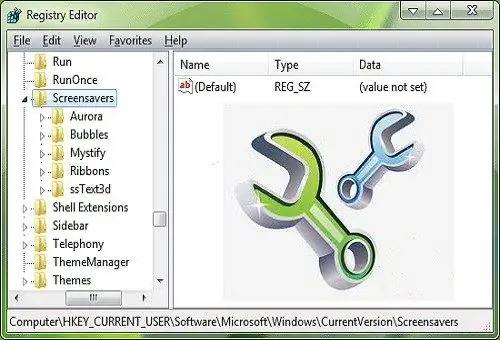Windows OS customization is mainly done through the user interface. Despite the convenience of using it, its functions are limited, not all parameters of the operating system can be configured with its help. The possibilities for changing OS parameters by editing the registry are incomparably wider.

Necessary
- - a computer with Windows OS installed;
- - third-party programs for editing the registry.
Instructions
Step 1
Editing the registry is carried out using the regedit.exe program (located in the / windows / folder) or regedit32.exe (located in the / windows / system32 / folder). For convenience, create a shortcut to this program on the "Desktop" - by right-clicking on it and selecting the "Desktop (create shortcut)" option. Regedit.exe can also be run by typing regedit into the Run form on the Start menu.
Step 2
Run the program. In the window that opens, in the "Edit" menu, select the "Find" option or press Ctrl + F. In the form that appears, enter the name of the key that you are going to delete, and click "Find Next". Depending on the search parameters that are specified in this window, the program will search for the required key.
Step 3
Highlight the found key. From the File menu select the Export option. In the dialog box that appears, set the file name (as an option, the name of the key you are deleting) and specify the folder in which to save the file with the reg extension. Click "Save". Saving this file will allow you to restore the deleted key at any time if its deletion would adversely affect the operation of the operating system. To do this, it will be enough to double-click on the saved file and confirm the operation by clicking OK. As a result, the deleted registry entry will be restored.
Step 4
Select the key, select the Delete option in the Edit menu and confirm your decision by clicking OK. Or right-click on the key and select the "Delete" option from the context menu. Close the editor and restart your computer. The latter is not always required, it depends on the parameter to be deleted, but for a guarantee, it still does not hurt to do this.
Step 5
It should be borne in mind that the registry may contain several identical keys stored in different sections - HKEY_CURRENT_USER, HKEY_LOCAL_MACHINE and others. In some cases, it is sufficient to make a change in the HKEY_CURRENT_USER section so that it is automatically made in other sections as well. However, this does not always happen; for a complete guarantee, you need to delete the keys in all partitions.
Step 6
You can edit the registry using numerous third-party programs. Most of them save the registry settings before making the patch, which eliminates the need to export (save) the remote key file yourself. In addition, the programs clean the registry and search for keys, displaying them all at once, while when searching in regedit.exe, after finding one key, every time you confirm the search for the next one.
Step 7
Sometimes the system refuses to remove the key, informing you that you do not have permission to do so. In this case, select the subsection where the key is located and select the "Resolution" option from the "Edit" menu. In the window that appears, go to the "Advanced" tab and set yourself full access to editing this subsection.






